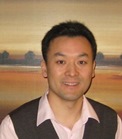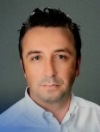Day 2 :
Keynote Forum
Mohamed Samir Hefzy
The University of Toledo, USA
Keynote: Biomechanics of the knee joint in deep fl exion
Time : 10:00-10:30

Biography:
Mohamed Samir Hefzy is currently serving as Associate Dean of Graduate Studies and Research Administration of the College of Engineering and Professor of Mechanical, Industrial and Manufacturing Engineering at The University of Toledo (UT), Toledo, Ohio. He has been on the faculty of The UT since 1987. He graduated from Cairo University, Egypt, with a BE in Civil Engineering in 1972, and a BSc in Mathematics from Ain-Shams University in 1974. He earned his MS in Aerospace Engineering in 1977 and his PhD in Applied Mechanics in 1981, both from The University of Cincinnati. He then received training as a Postdoctoral Research Associate for two years in the Department of Orthopedic Surgery at The University of Cincinnati’s College of Medicine. In December 2003, he was elevated to the Grade of American Society of Mechanical Engineers (ASME) Fellow. He is the recipient of many awards, including the 2011 Distinguished Service Award from the ASME.
Abstract:
It has been reported that by 2030, total knee arthoplasties are expected to grow to 3.48 million procedures as younger; more active patients can be treated with TKR’s surgical interventions. The success of this procedure is determined by the quality in its outcome. Young and active patients are expected to perform activities that require the knee to be maximally flexed. It is thus very important to fully determine the knee behavior when it is maximally flexed. The primary aim of this study was to determine the contact characteristics at the tibio-femoral (TF) and patella-femoral (PF) joint during deep knee flexion. A3-D finite element model of the human knee joint was developed using ABAQUS. Our results show that the PF contact occurs at the patellar groove on the femoral condylar surface at 900 of knee flexion and the contact location shifts distally along the groove on the femoral condyles as knee flexion increases. The PF contact was primarily located at the proximal half of the patellar articular surface. The TF contact initially occurs near the center of tibial plateau and then moves posteriorly towards the edge of the tibial plateau as the knee flexion angle increases. In deep knee flexion, the TF contact mainly occurs at the posterior edge of the tibial plateau. The results also show that lift-off occurs during deep squat, as the medial condyle lifts away from the tibia. The results of this study can be used to design a better TKR that better reproduces normal knee characteristics.
Keynote Forum
Yong Wang
Pennsylvania State University,USA
Keynote: Programmable materials for mechanobiology
Time : 10:30-11:00

Biography:
Dr. Wang got his B.S. degree in Environmental Chemistry at Jilin University in 1995. He switched the major to Chemical Engineering and got his M.S. degree in 1998 from Dalian Institute of Chemical Physics, the Chinese Academy of Sciences under the supervision of Prof. Xiaojun Ma. He pursued his Ph.D. education in Biomedical Engineering at Duke University between 2000 and 2004, studying drug and gene delivery with Drs. Fan Yuan and Chuan-Yuan Li. Afterwards, Dr. Wang worked with Drs. Bruce Sullenger and Eli Gilboa at Duke University Medical Center before taking a faculty position at the University of Connecticut in August 2006. He received a CAREER Award and a CREATIV Award from NSF in 2010 and 2012, respectively. Dr. Wang was promoted to associate professor (with tenure) in August 2011 and he moved from UConn to Penn State in January 2013 (with tenure).
Abstract:
Human tissues are materials responsive to mechanical and chemical stimuli for a diverse array of functionalities. We have been developing tissue-mimicking materials that can respond to numerous biological and physical stimuli. This presentation will introduce how to develop programmable aptamer-functionalized hydrogels and how the functionalities of these hydrogels are specifically regulated with high fidelity at the DNA and protein levels. Our data have shown that aptamers could be effectively incorporated into hydrogels and that the incorporation ofaptamers into hydrogels did not compromise the capability of aptamers in recognizing target molecules and the mechanical properties of the hydrogels. Importantly, the incorporated aptamerswere able to hold protein drugs with high binding strength and specificity. By rationally designing aptamer sequences, different release kinetics could be achieved. We believe that these programmable hydrogels hold great potential for a variety of biomedical applications ranging from drug delivery to regenerative medicine.
- Implant/Transplant Surgeries
- Biomedical engineering
Session Introduction
Ash Harkara
VOLMO Ltd
UK
Title: Optimisation of implant position in cemented femur for lowest value of micromotion
Time : 11:20-11:45

Biography:
Ash Harkara is a founder and Managing Director of VOLMO. Ash is a scientist entrepreneur specializing in building culture of innovation and collaboration that drives growth, profitability and creates value. His talent for developing global visions and strategies, translating them into executable plans, a fierce commitment to customer intimacy, operational excellence and a passion for empowering people has helped Ash successfully shape and steer organizations towards growth and shareholder value creation. A decisive, intelligent risk taker, he challenges paradigms by ‘doing the right things rather than doing things right’. Ash has MBA and 20 years experience in academics and industry across various roles and functions. Having worked with clients across all the continents has equipped him with transnational business acumen needed to successfully manage global businesses, multimillion dollar budgets and P&L to ensure profitability and growth. By helping businesses get the basics right and take a leaner approach, he enables them to adapt to changing environments and execute on strategies that deliver results and create share holder value. With a PhD in computational modeling, Ash has a keen interest in patient specific device development using 3D medical image processing, finite element analysis/computational fluid dynamics and 3D printing.
Abstract:
Total hip replacement (THR) is one of the most common and effective surgical procedures performed worldwide with the purpose of improving the quality of life of patients suffering from hip disorders. There are two major types of artificial hip replacements: cemented and uncemented. This paper presents finite element approach to measure micromotion along the stem/cement and cement/bone interface. A response surface model (RSM) was created and used to determine the best implant position for lowest value of micromotion. In this study finite element model of femur was created from 3D CT scan data using ImageSim software from VOLMO. Surface model of femur in STL format was exported into ImageSim's CAD environment where femur resection, implant positioning and alignment were done. The final assembled model of bone, cement and implant was used as the base model for creating new models. Java scripting functionality within the tool provided a robust environment for automatically rotating the implant to a new angle, exporting STL, volume meshing, applying load boundary condition and exporting volume mesh. This technique provided an efficient approach for generating new models with different implant positions in the femur bone. Around 25 models were generated in less than twelve hours. These models were then simulated in DYNAMIS solver available internally in the environment.
Emre KARADENIZ
Umraniye Training and Education Hospital, Istanbul, Turkey
Title: A New Fixation Device and Technique: EFECE
Time : 11:45-12:10

Biography:
Emre Karadeniz has completed his MD at the age of 24 years from Osmangazi University School of Medicine and residency from Baskent University School of Medicine. He has completed his spine surgery fellowship from Hacettepe University and Istanbul Spine Center. He is the lecturer of Umraniye Training and Research Hospital. He is the inventor of EFECE fixation systems. And he has more than 10 national and international patents.
Abstract:
EFECE is a patented fixation device. It is cylinder shaped and contains 2 pieces that catch each other with threads. EFECE, contains 3 balls in cone shaped gloves.(Video: https://www.youtube.com/watch?v=AloRcFcae6g) It has surgical tool set which is a new technique. With EFECE systems; along the EFECEwires, surgeon may compress the fracture line and after locking EFECE, fixation may be achieved. The smallest EFECE, which is with 6mm radius, can be used with 1.2mm EFECE wire. 6mm EFECE resist up to 73kg of distraction force. EFECE scales are; from 6mm to 20mm radius. EFECE wire scales are; from 1.2mm to 3mm.
Technique: After reducing the fracture, EFECE wire should be passed across the fracture line. With percutaneous technique, EFECE should be advanced on the EFECE wire to the bone cortex, with the help of the patented tools. Then EFECE should be fastened. From the counter side of the EFECE wire, the second EFECE should be advanced to the bone cortex. Then, EFECE wire should be tensioned with EFECE wire stretcher and the EFECE should be fastened. The remaining part of the EFECE wire should be cut with the EFECE wire cutter. Implant removal is with the help of EFECE magnets.
EFECE systems are able to achieve fixation with the help of thin EFECEwires. The fixation strength is not related to bone quality. Thin EFECEwire achieve fixation in difficult bone anatomy like elbow. Technique is completely percutaneous. Indication scale is wide. Implant removal with magnets is also a new approach for implant technologies.
Lisa A Ferrara* and Diane Dobrea#
*OrthoKinetic Technologies, USA
# Kapstone Medical, USA
Title: Workshop: Designing and evaluating protective gear and implants for safety and effectiveness
Time : 12:10-13:10- Break-13:55- 15:55
Biography:
Dr. Lisa Ferrara is currently the Owner and President of OrthoKinetic Technologies LLC, and OrthoKinetic Testing Technologies, LLC, a medical device consulting and certified test facility that provide a turn-key approach for medical device evaluation. Academically, she was on staff for the Departments of Neurosurgery and Orthopedic Surgery respectively, at The Cleveland Clinic Foundation (CCF) in Ohio, where she founded the Spine Research Laboratory and served as the director from 1999 until 2003. During her 25 years of academic research, she has authored more than 50 technical publications, 25 book chapters, has been granted two patents, and given over 50 invited presentations on novel technologies, biomaterials, nanotechnology and nanomedicine, musculoskeletal and spinal biomechanics, surgical stabilization techniques and medical devices. She also serves on numerous scientific advisory boards and was the recent recipient of the Healthcare Entrepreneur of the Year Award for Coastal North Carolina, was highlighted as an industry expert in medical device testing and analysis, and was named Woman of the Year in 2015 by the National Association of Professional Women.
Abstract:
Innovation starts with a novel idea that has the potential to evolve into a viable product which can address a specific market need. The criteria for successful product development are multifaceted and involve a multidisciplinary team to ensure that the product behaves in a safe and effective manner. Often, the greatest challenges the team may face are during the early phases of product development. Entry into the product lifecycle of a new technology involves the coordination of multiple resources and experienced experts with diverse backgrounds that can provide guidance on the market need, patent landscape, verification and validation protocols, manufacturing capabilities, potential risks and mitigation. Additionally, there are a number of specific processes outlined in the product life cycle that provide the pathway for successful product development from the early concept stage to final commercialization. Thus, ensuring that a safe product, which functions per its intended use is brought to market, involves many iterative processes throughout the product lifecycle. Therefore, the objective of this workshop will be to provide an overview of product development from early concept to commercialization, which will include a discussion of the potential risks and pitfalls that are commonly faced during the many phases of development.
Poster Presentations 15:55-16:55

